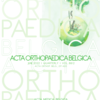Zero-profile implant versus integrated cage-plate implant in treatment of single level cervical disc disease
Anterior cervical discectomy; cervical fusion; zero-profile implant; plate cage Benezech; integrated cage-plate implant.
Published online: Aug 23 2022
Abstract
The aim of this retrospective study is to evaluate and compare the clinical and radiological results of the use of Zero-P implant and the integrated cage-plate implant in surgical treatment of single level cervical disc disease. It includes 54 consecutive patients who underwent single level anterior cervical discectomy and fusion. The patients were divided into 2 groups. Group (A) including 28 patients operated with zero- profile implant and group (B) including 26 patients operated with integrated cage-plate implant. Mean operative time, blood loss, incidence of dysphagia and any other complications related to the procedure were recorded and compared. Patients were assessed radiologically by measuring cervical lordosis using the Cobb angle and the segmental angle. Patients were assessed clinically by the Japanese orthopedic association score and the neck disability index. These values were also compared. The mean age of the patients in group (A) was 49.5±11 years, and in group (B) it was 49.8±11.6 years. Mean blood loss and operative time in group (A) were 77.3±9.4 ml and 72.1±7.9 minutes, while in group B, they were 80.7±9.5 ml and 74.8±8.4 minutes with no statistically significant difference between both groups. There were also no statistically significant difference between both groups as regards incidence of dysphagia, clinical scores nor radiological parameters. In conclusion, both zero-profile implant and integrated cage-plate implant have comparable satisfactory clinical and radiological results in treatment of single level cervical disc diseases with little complications.
